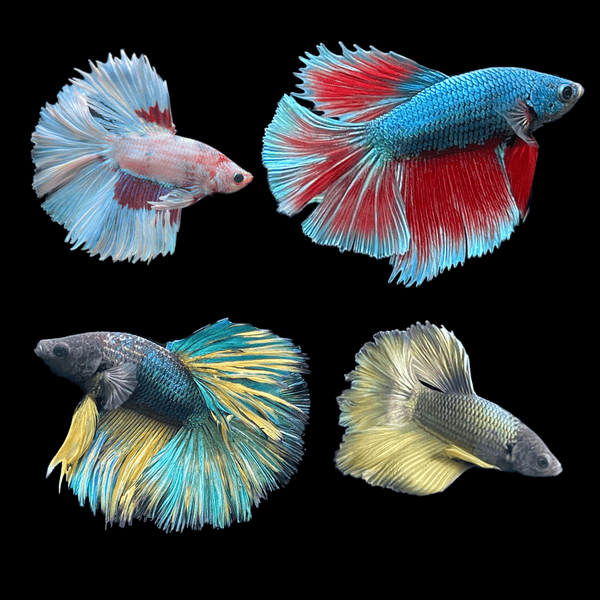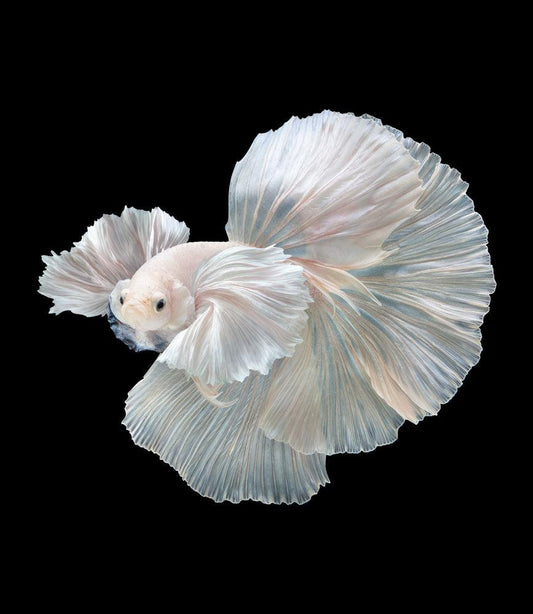Typical Betta Fish Conditions and Exactly How to avoid Them
Typical Betta Fish Conditions and Exactly How to avoid Them
Blog Article
Breeding Betta Fish: a Comprehensive Step-By-Step Overview to Successfully Raising Child Bettas From Eggs to Their Adult Years
Breeding Betta fish is a meticulous venture that needs mindful planning and execution to guarantee the successful growth of fry from eggs to develop fish. As the male Betta vigilantly constructs a bubble nest and guards the precious eggs, the subsequent stages of treatment and shift demand attention to information and expertise of finest methods.

Selecting Reproduction Pairs
When getting started on the journey of breeding Betta fish, choosing the appropriate reproduction pairs is vital to accomplishing desirable characteristics and a healthy and balanced lineage - betta fish. The initial action in this process is to determine the particular qualities you wish to enhance or preserve, such as color, fin type, and physique. It is important to select genetically varied pairs to avoid inbreeding, which can cause health issues and unfavorable qualities
Review potential breeding candidates thoroughly. A healthy and balanced male Betta should display dynamic shades, an active demeanor, and well-formed fins, while the female must likewise show lively coloration and a rounded stubborn belly, suggesting readiness for spawning. Observing the temperament of both fish is essential, as aggressive or overly reluctant people may not reproduce effectively.
Documentation of lineage is equally essential. Keeping documents of the moms and dad fish's ancestry can aid you track genetic attributes and possible problems. Additionally, consult credible breeders or on-line resources for guidance on selecting compatible pairs. Inevitably, spending time in the choice procedure will significantly improve the likelihood of producing solid, vivid spawn that fulfill your breeding goals (betta fish).

Preparing the Reproduction Container
Creating an optimal breeding setting is an essential action after selecting appropriate sets for Betta fish. The reproduction tank should be especially developed to provide comfort and promote the natural reproduction behaviors of the fish. Beginning with a tank dimension of a minimum of 10 gallons to make sure appropriate room for both the man and women Bettas.
Preserve a gentle filtration system to keep the water tidy while avoiding strong currents that can worry the fish. Additionally, an air rock can be contributed to give oxygenation without interrupting the water surface area way too much.
Temperature level law is vital; purpose for a steady variety of 78-82 ° F(25-28 ° C) making use of a trustworthy heating unit. The pH level ought to be kept between 6.5 and 7.5, and normal water adjustments are required to make certain high water high quality.
Incorporate floating plants or spawning mops to develop hiding spots for the woman, while also motivating bubble nest building by the man - betta fish. Finally, guarantee the storage tank is without sharp designs and any type of potential threats, as the welfare of the fish need to always be focused on during this crucial stage of reproduction.
The Reproduction Refine
Generally, the breeding procedure for Betta fish involves a collection of distinctive and observable actions that show preparedness for reproduction. The male Betta begins by constructing a bubble nest at the water's surface area, which acts as a site for the fertilized eggs. This nest is important, as it supplies have a peek at these guys a secure environment for the eggs until they hatch.
As soon as the nest is established, the male will certainly present courtship habits, such as flaring his fins and exhibiting vibrant colors to attract the woman. The lady, upon picking up the man's preparedness, will certainly react by displaying upright red stripes along her body, indicating her receptiveness.
The fertilized visit here eggs then fall to the bubble nest, where the male thoroughly gathers and returns them to the nest. Following this, the male thinks responsibility for guarding the nest and making sure the safety of the eggs until they hatch, normally within 24-36 hours.
Taking Care Of Betta Fry
Caring for Betta fry needs careful focus to their atmosphere and nutrition to make sure healthy and balanced development and development. After hatching out, Betta fry are exceptionally little and vulnerable, demanding a stable and tidy habitat. Maintaining a water temperature in between 78 look at here ° F and 80 ° F is crucial, as Betta fry flourish in cozy conditions. Additionally, make sure that the water is devoid of unsafe contaminants; normal water adjustments of 10-20% are advised to maintain ideal water quality.
Feeding Betta fry is just as vital. Feed them little quantities numerous times a day, being careful not to overfeed, which can lead to water top quality problems.
Transitioning to Adult Bettas
As Betta fry mature, transitioning them to grown-up Bettas is an important stage that needs mindful management of their environment and social interactions. This process commonly begins when the fry get to around 6 weeks old, at which factor they can be progressively presented to an extra organized living environment.
To promote this transition, it is vital to make sure that the water parameters-- such as temperature, pH, and ammonia levels-- are optimal and secure. Adult Betta fish grow in warm water (around 78-80 ° F) with a pH of 6.5 to 7.5. Slowly accustom the fry to these conditions to decrease stress and anxiety.
Social communications are one more essential variable; male Bettas are notoriously territorial and hostile. As a result, it is a good idea to different males right into specific storage tanks as they mature. Women Bettas can be housed together, yet care ought to be required to keep track of for indicators of aggression.
In addition, dietary adjustments need to be made as the fry expand. Include top quality pellets and live foods to sustain their development and health. By handling these elements properly, you can promote a successful shift to the adult years for your Betta fish.

Final Thought
Effective breeding of Betta fish calls for careful focus to detail throughout the whole process, from selecting genetically varied sets to offering optimum treatment for fry. Furthermore, a well balanced diet regimen and gradual adjustment to grown-up environments are vital for the development and development of Betta fish.
Report this page